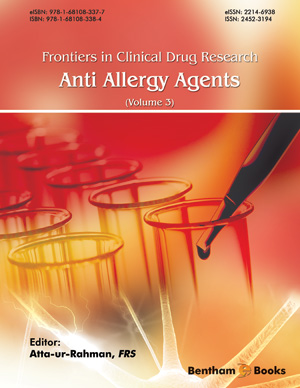Abstract
Although eosinophilic inflammation in airways is a fundamental pathophysiology of bronchial asthma, there are no anti-inflammatory agents available other than glucocorticosteroid. Moreover, airway remodeling is caused not only by airway eosinophilia but also by bronchoconstriction independent of inflammation. However, glucocorticosteroid does not directly relax airway smooth muscle. Conversely, bronchodilaters such as β2-adrenoceptor agonists and muscarinic receptor antagonists do not clinically improve eosinophilic inflammation. Therefore, research and development for anti-asthmatic agents that are effective for both inflammation and contraction in the airway are needed to innovate pharmacological therapy for bronchial asthma. Airflow limitation, airway hyperresponsiveness, β2-adrenergic desensitization, and airway remodeling, which are caused by airway eosinophilia, are characteristic features of this disease. Alteration of contractility in airway smooth muscle contributes to airflow limitation, airway hyperresponsiveness, and β2-adrenergic desensitization. Furthermore, alteration of cellular protein synthesis contributes to airway remodeling via facilitation of the proliferation and migration of airway smooth muscle cells. Such phenotype plasticity means that airway smooth muscle cells can change the degree of a variety of functions, including contraction, proliferation, migration and the secretion of inflammatory mediators. Airway smooth muscle is involved in the pathophysiology of bronchial asthma not only via tension but also via inflammation. Alterations in contractile and synthetic phenotypes are caused by various factors, and Ca2+ homeostasis (Ca2+ dynamics and Ca2+ sensitization) in airway smooth muscle cells plays an important role in these alterations. Modulation of Ca2+ dynamics through the large conductance Ca2+-activated K+ channel / L-type voltage dependent Ca2+ channel linkage and store-operated Ca2+ influx, and of Ca2+ sensitization through the RhoA / Rho-kinase pathway contribute not only to alterations in the contractile phenotype involved in airflow limitation, airway hyperresponsiveness and tolerance to β2- adrenoceptors but also to alteration of the proliferative phenotype involved in airway remodeling. Therefore, these processes for Ca2+ signaling may provide therapeutic molecules for bronchial asthma, and research in these areas using airway smooth muscle may provide novel strategies for the development of pharmacological therapy (bronchodilation and anti-inflammation) towards the improvement of current control and towards reduction of future risk in bronchial asthma. Moreover, changing the phenotype in airway smooth muscle cells by focusing on modulation of Ca2+ dynamics and Ca2+ sensitization may play key roles in research and development for asthmatic agents.
Keywords: Airway Hyperresponsiveness, Airway Remodeling, Airway Eosinophilia, Allosteric GPCR Modulation, Ca2+-activated K+ channels, Ca2+ dynamics, Ca2+ sensitization, G proteins, Intrinsic Efficacy, L-type voltagedependent Ca2+ channels, Muscarinic Receptors, Rho-kinase, Tracheal Smooth Muscle, β2-adrenoceptors, β2-adrenergic desensitization.






















